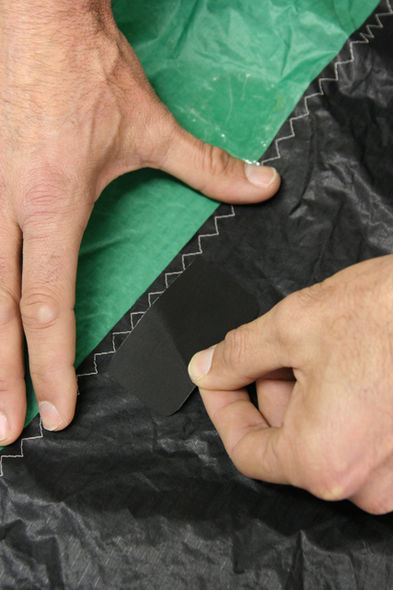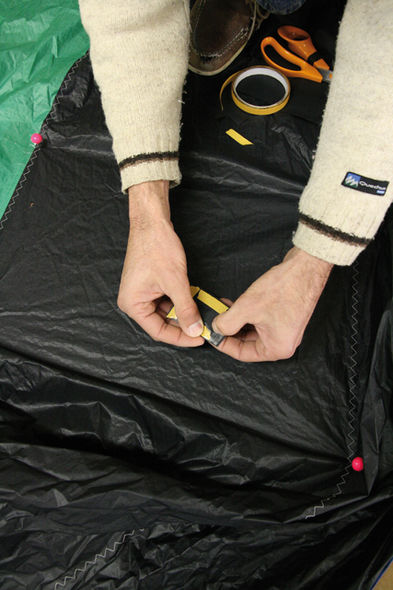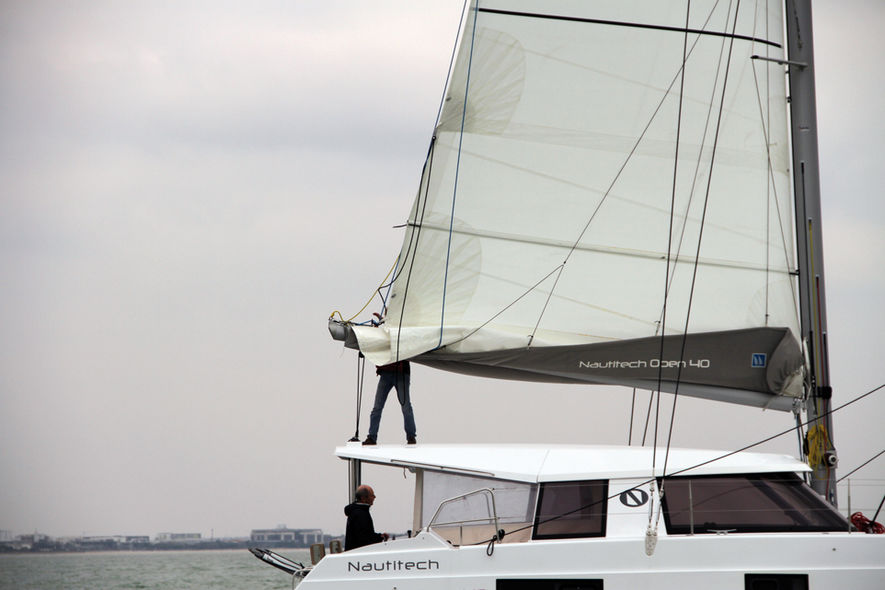
Issue #: 152
Published: March / April 2017
- Price per issue - digital : 5.00€Digital magazine
- Price per issue - print : 7.00€Print magazine
- Access to Multihulls World digital archives Digital archives
Sail workshop Temporary repairs (before a visit to the sailmaker)
Skippers who carry a sewing machine on board, or even a needle and thread are rare. For this reason, for repairs aboard, we have limited ourselves to the possibility of making a hole, and the use of light line. Not forgetting Insignia, the famous, very powerful adhesive for sailcloth. Our sailmaker then gives details of the definitive repair of the damaged sail.
Among the most classic damage when ocean cruising, we find a tear in the spinnaker, a slider ripped off the mainsail just above the tack, a reef cringle also ripped, but this time because we had forgotten to undo the knot, the torn batten pocket on a mainsail which has flogged for too long, and finally, the genoa leech torn at the level of the spreaders. And here we are talking about sailcloth in good condition. Because exposure to UV – six months is sufficient – literally burns a sail. A major classic? The genoa rolled the wrong way, with the anti-UV strip on the inside. Not to mention the unfortunate bits of the mainsail, most often the headboard or the foot, which escape from their cover... Take care of your sails, and they will cause you fewer problems!
Why does this happen?
Once hoisted, the spinnaker is only damaged in very strong winds. In moderate conditions, it’s during hoisting and furling that the clevis pins, split rings and spreaders (poorly protected) take great pleasure in tearing the nylon. When gybing, the bowsprit or the radar can perforate the spinnaker.

What can you do aboard?
As long as the tear is no longer than 30 cm, the spinnaker can hold out, on the condition that you call Insignia to the rescue! Cut out a patch, round off the corners and stick it on. Do the same on the other side.

The pro’s diagnosis
“The cloth tears most often inside a panel. The stitches stop the process. We have nylon in all colors, to carry out an almost invisible repair. It is also possible to replace one or more panels.”

The sailmaker’s repair
Cleaning with acetone before placing an adhesive patch, in the case of a simple rip. For a bigger tear, the nylon is laid flat and pinned out via the stitching holes. A patch is cut out, stuck down and sewn. The old cloth is cut away on the other side.

Why does this happen?
When furling the mainsail, or taking in a reef, if the topping lift is not taken in and the foot is well stretched out, the boom will drop down onto the deck. The last slider then takes a considerable tractive force...until it rips off.

What can you do aboard?
Is the weather fine? Then just remove the damaged slider. But if the wind gets up again, take in a reef a bit earlier than usual, to relieve the strain ...
What readers think
Post a comment
No comments to show.